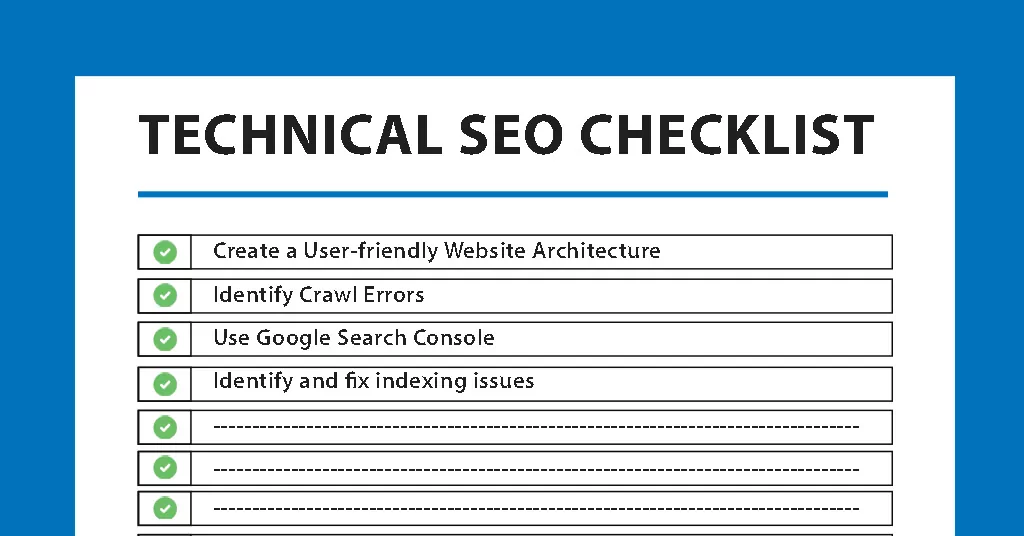How to find and eliminate duplicate content from your website?
Table of contents
For your website to retain a strong SEO presence and prevent any detrimental effects on your search engine results, duplicate content must be found and removed. According to Jacksonville SEO experts, the following actions can be taken to find and delete duplicate content:

Perform a Website Audit
To begin, use a tool like Screaming Frog or SEMrush to audit your website. You can use these tools to crawl your website and find any instances of duplicate content.
Verify URLs for Duplication
Be wary of URLs that point to the same or related material. This may occur as a result of URL parameters or when URLs are produced dynamically. Consolidate these duplicate URLs into a single, preferable version using canonical tags or 301 redirects.
Utilize Google Search Console
The “Coverage” and “Index > Excluded” sections of Google Search Console can assist you in locating any indexing problems caused by duplicate material. It will notify you of any duplicate content that Google has found and offer suggestions on how to deal with it.
Examine your meta titles and descriptions
Go over each page’s meta titles and descriptions. Use only one meta description per page; having numerous meta descriptions will confuse visitors and search engines. Create distinct, pertinent meta descriptions that completely capture the content of each page.
Internal Duplicate Content
Review the content on your website to look for instances of internal duplication. When the same text—such as product descriptions or boilerplate text—appears on many pages, this can happen. For consistency across your site, rewrite, combine, or delete duplicate material.
Check for Scraped or Stolen Content
To see if your content has been scraped or stolen by other websites, use tools like Copyscape. Take steps to demand the removal of plagiarized content or send DMCA takedown letters if you discover instances of plagiarism.
Keep an eye on user-generated content
If your website permits such submissions, make sure it is appropriately monitored to avoid instances of duplicate content. Apply standards and filters to find and delete user-generated duplicate content.
Use 301 Redirects or Canonical Tags
When combining duplicate content, either use 301 Redirects to route duplicate URLs to the preferred version or use canonical tags to tell search engines which page is the original and preferred one.
Update the robots.txt and XML sitemaps
After consolidating or removing duplicate content, update the robots.txt and XML sitemaps to reflect the changes. This aids in the proper discovery and indexing of your updated material by search engines.
Monitor and maintain your content

Keep a regular eye out for any fresh instances of duplicate material on your website and take immediate action to fix them. Regular website audits and continuing content upkeep are two ways to do this.
You may successfully locate and delete duplicate material from your website by following these steps and being proactive. This will ensure a stronger SEO presence and higher search engine results.
Duplicate Content’s Effect on Search Engine Rankings
One of the biggest SEO issues that website owners encounter is duplicate content. It not only hurts your site’s ranks, but it can also have a detrimental effect on your SEO campaigns. Search engines may become confused by duplicate content, indexing the incorrect pages, or penalizing your website completely. Google has even made it clear that they dislike duplicate material on websites and that it might harm your rankings. Because of this, it’s essential to find and delete any duplicate content on your website. By doing this, you may take charge of your website’s SEO and raise its position in search results.
Implementing techniques to prevent the creation of pointless duplicates and optimizing your web pages with distinctive, high-quality content can also enhance your site’s SEO and set you apart from the competition. In the realm of SEO, excellent content is king, so give it the attention it deserves to keep your website on the cutting edge.
Methods to Prevent Creating Extraneous Duplicates
Duplicate material on your website might harm your rankings in search engines and mislead visitors. Here are some steps from SEO Jacksoville experts to prevent this:
- Use canonical tags: When numerous versions of a webpage are available, canonical tags let users know which version is favored. Search engines can recognize which page to index and rank by employing canonical tags, avoiding duplicate content problems.
- 301 Redirects: Use 301 Redirects to send users and search engines to the preferred URL if you have many URLs for the same piece of content. By doing this, it is made sure that all traffic and authority are directed to the right page.
- Combine comparable Content: If you have overlapping or comparable content on several pages, you might want to consider combining it into a single, complete page. Search engines and consumers can see that you only have one reliable source for that subject by doing this.
- Avoid Boilerplate Content: Boilerplate content can occur on several pages and includes things like navigation menus, sidebars, footer copy, and copyright information. To avoid duplicate content penalties, it is crucial to make sure that each page’s main content is unique.
- Use Noindex Tags: To prevent search engines from indexing pages that are not essential for search engine indexing, such as thank you pages, login pages, or search result pages, you may want to use the “noindex” meta tag.
- Syndicate Content Correctly: To prevent concerns with duplicate content, use canonical tags or add a rel=”canonical” link to the original source when syndicating content from other websites or reposting your own content on other platforms.
- Monitor crawling and indexing: Monitor crawling and indexing of your website utilizing tools like Google Search Console on a regular basis. This will enable you to spot any concerns with duplicate content and take the required steps.
- Metadata optimization: Make sure each page contains distinctive metadata, such as title tags and meta descriptions. This aids in the comprehension of each page’s content by search engines and avoids content confusion or repetition in search results.
These techniques will help you avoid making duplicate content that isn’t necessary while also improving user experience and search engine rankings for your website. In order to remain on top of any potential duplicate content issues that may develop, remember to regularly check and audit your website.







